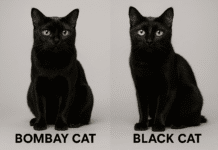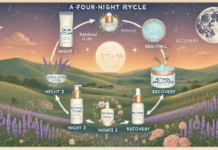Last Updated on March 10, 2025 by Bisma Sehar
Table of Contents
What Is Graffiti Removal and Why Is It Necessary?
Graffiti refers to a range of artistic images and text that are applied to surfaces in public or private spaces. When done without permission, it can cause legal issues and social problems, leading to visual pollution and decreased property value. It’s important to promptly and thoroughly remove these markings, ideally using professional graffiti removal services near you. It restores aesthetic order and property integrity while deterring further acts by showing community responsiveness. Additionally, conscientious graffiti removal is vital to urban management, contributing to the overall perception of safety and care within the community.
Graffiti Removal Techniques: Comparing Traditional and Innovative Methods
Numerous options are available for professional graffiti removal services near you. It is essential to constantly research and choose a company with a proven track record of success and uses safe graffiti removal methods that do not damage the surface below.
In contrast, others showcase technological advancements like laser ablation and environmentally friendly biochemical. While sometimes effective, traditional methods risk damaging the underlying architecture, creating a new issue while resolving an existing one. Innovations in the field aim to offer resolutions that acknowledge the complexity of various surfaces, whether porous like concrete or delicate like historical stone facades. Operators skilled in these techniques employ a nuanced understanding to avoid further damage to the urban canvas.
The Science Behind Graffiti Removal Products
To navigate the intricate world of graffiti removal, it’s essential to recognize the scientific foundations of the products used. The spectrum includes solvents designed to break down the bonding agents in paint, allowing the graffiti to be washed away, and more sophisticated solutions crafted with ecological sensitivities in mind. Such products are often the result of rigorous research and development aimed at ensuring the least possible environmental footprint while still maintaining high effectiveness. Knowledge of these products informs the selection process for safe and appropriate use and can broaden our perspective on caring for our shared spaces responsibly.
Graffiti Removal’s Impact on Property Value and Community Image
A community’s aesthetic can tell a story of its dynamic character, but the chapter on graffiti often speaks to a narrative of neglect if not promptly addressed. The sight of spray-painted tags and murals in unintended settings can lead to a perception of disorder, resulting in declining local patronage, depreciating property values, and potentially deterring new residents or businesses. What’s more, the speed at which a community responds to graffiti can indirectly communicate the level of local government and community engagement in public welfare, having a noteworthy influence on the social and economic facets of the neighborhood.
Read More: senior living community in Virginia
Preventive Measures: Strategies for Reducing Vandalism
As crucial as removal is, the role of preventive strategies in curbing graffiti vandalism cannot be overstated. Implementing graffiti-resistant coatings, community policing initiatives and prompt action on newly spotted graffiti are admirable front-line tactics. However, the key to a long-term reduction in vandalism lies in addressing the issue at its root: the motivation behind the spray can. This involves proactive community involvement, education around the impact of vandalism, and initiatives that steer potential offenders towards positive activities and legal forms of expression.
Legal and Social Deterrents
Legal deterrents, such as anti-graffiti solid laws and swift enforcement, send a potent message against the unauthorized defacement of public spaces. Meanwhile, social deterrents may include educational campaigns, promoting respect for public property, and support for legal avenues of artistic expression. Effective social strategies mitigate vandalism and encourage community members to report graffiti and participate in neighborhood beautification efforts.
Environmental Considerations in Graffiti Removal
When the subject of graffiti eradication is broached, the dialogue inevitably turns to its environmental implications. The variety of cleaning products offers options that reduce harmful runoff and minimize ecological disruption. In this sector, companies are increasingly innovating to derive solutions potent against the intractable nature of graffiti paint and compassion towards the natural world. It is incumbent upon urban maintenance initiatives to embrace such advancements, ensuring that the legacy of their actions aligns with the broader objectives of sustainability and conscientious stewardship.
Engaging the Community: Education and Artistic Alternatives
Embracing the concept of community engagement and education is paramount in transforming the challenges of graffiti into opportunities for collective progress. Schools and local organizations can propel this advancement through workshops and information sessions that delineate the repercussions of vandalism. Moreover, collaborations between city officials and artists can lead to the curation of public spaces dedicated to lawful artistic endeavors, mitigating illicit actions by allocating an outlet for creativity.
Community Art Projects
The initiation of community art projects can serve as a fulcrum for change, turning locations targeted by vandalism into canvases that broadcast local narratives and culture. Municipal-sanctioned graffiti zones, mural programs, and street art festivals not only introduce vibrancy to a city’s visual landscape but also engender a vital sense of ownership and pride amongst residents. In addition to these artistic alternatives, opportunities for participation in the upkeep and beautification of communal areas channel local talent’s energies towards enhancing the urban environment.
Conclusion: Balancing Cleanliness with Urban Expression
Combating graffiti involves balancing the imperative of upholding public spaces with the inherent human drive for expression. Striking a balance necessitates openness to the multiple layers of this occurrence—viewing it through lenses of cleanliness, community, sustainability, and art. The ultimate objective is to forge environments that resonate with care and order while celebrating creativity and nurturing spaces that elicit a sense of belonging and community pride. This holistic approach promises cleaner streets, cultural enrichment, and social harmony.
Apart from this, if you are interested to know more about What’s Included in a Herbicide Kit then visit our featured category.













